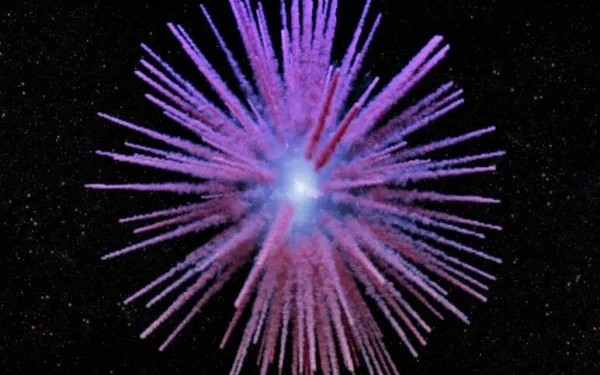Introduction
A strangely shaped dead star, located approximately 6,500 light-years from Earth, has captured the attention of astronomers due to its unusual structure. This star, believed to have undergone a supernova explosion around 900 years ago, displays unique spike-like formations protruding from its surface. What makes this stellar remnant even more mysterious is its envelopment in long, hot bodies of sulfur, a phenomenon that has left scientists puzzled.
Discovery of the Unusual Supernova Remnant
The astronomical discovery was first noted by researchers at the Harvard-Smithsonian Center for Astrophysics. Tim Cunningham, a leading astronomer at the center, has been closely studying this phenomenon and shared his findings in the Astrophysical Journal Letters. His observations suggest that this is one of the most peculiar remnants of a supernova ever recorded, adding another piece to the puzzle of cosmic evolution.
Historical Context: The Supernova of 1181
Interestingly, the origins of this dead star date back to the year 1181, when Chinese and Japanese astronomers documented an unusual celestial event. At the time, they referred to it as a “guest star,” a term used historically to describe new stars that temporarily appeared in the night sky. However, it wasn’t until 2013 that modern astronomers identified the remnants of this explosion, now known as the Pa 30 nebula.
The Strange Characteristics of Pa 30
Unlike typical supernova remnants, which tend to form symmetrical, spherical clouds of debris, Pa 30 exhibits an irregular and spiky structure. What sets it apart is that, despite undergoing a catastrophic explosion, part of the original star appears to have survived—a rare occurrence for a Type Ia supernova, a category that typically results in complete self-destruction.
The Mystery of the Star’s Survival
Type Ia supernovae are usually triggered when a white dwarf accumulates excessive mass from a companion star, leading to a runaway thermonuclear explosion that obliterates the dwarf completely. However, in the case of Pa 30, astronomers found that instead of total destruction, remnants of the original star persisted. This unexpected survival raises new questions about the nature of these supernovae and challenges existing models of stellar evolution.
Unusual Sulfur Clouds and Their Implications
Another perplexing feature of Pa 30 is the presence of massive clouds of hot sulfur surrounding the star. Such formations are not commonly observed in supernova remnants, leading researchers to speculate about the unique conditions that might have caused this anomaly. Some theories suggest that these sulfur-rich spikes could have originated from an interaction between two white dwarfs prior to the explosion, an event known as a double-degenerate merger.
Implications for Astronomy and Future Research
The discovery of this enigmatic star offers valuable insights into the life cycle of stars and the mechanisms behind supernovae. By studying Pa 30, astronomers hope to refine their understanding of Type Ia supernovae, which play a crucial role in measuring cosmic distances and understanding the expansion of the universe. The peculiarities of this celestial object may also provide clues about other unusual supernova remnants that have yet to be discovered.
Conclusion
Pa 30 continues to be a subject of intense study and debate within the scientific community. As new observational techniques and advanced telescopes become available, astronomers are optimistic about uncovering more secrets hidden within this mysterious supernova remnant. For now, Pa 30 stands as a testament to the vast and uncharted wonders of the universe, reminding us that there is still much to learn about the cosmic forces that shape our galaxy.

























